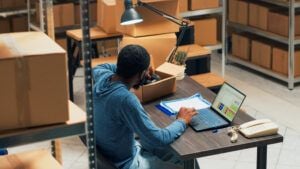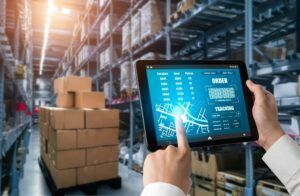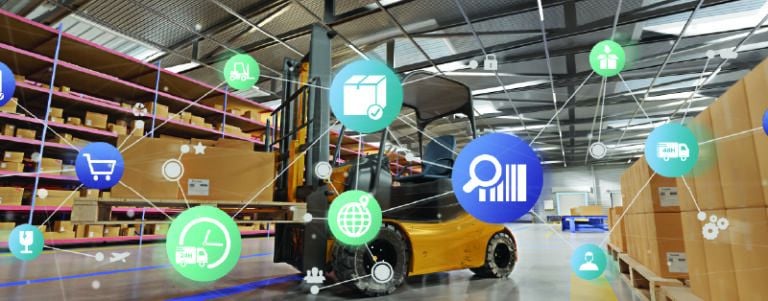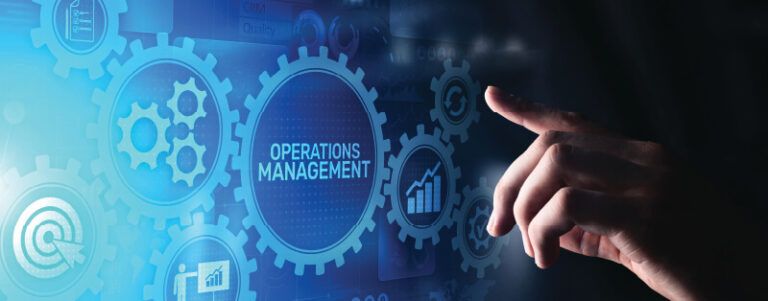Go Green! How Reverse Logistics Can Make Your Business Sustainable

Remember the mountains of unwanted electronics gathering dust in your attic? E-waste is a growing global problem, and traditional methods of disposal often raise environmental concerns. However, there is a solution on the horizon, and it is not what you might expect. Reverse logistics steps in to play a critical role, much like the lesser-known but essential backstage crew at a grand performance.
Think of a theatrical production. The actors take center stage, captivating the audience with their performance. In the meantime, behind the scenes, a dedicated team works tirelessly, setting up props, adjusting lighting, and ensuring no hiccups disrupt the stage performance. Reverse logistics functions similarly within the business world. The traditional supply chain, where products flow from manufacturers to distributors and finally to customers, is akin to the actors on stage. On the other hand, reverse logistics focuses on the movement of goods back up the supply chain, encompassing everything from customer returns and product recalls to end-of-life product management and recycling. It is, therefore, the unseen force ensuring a seamless operation, just like the backstage crew who ensure the performance runs flawlessly.
What is Reverse Logistics?

In short, reverse logistics refers to the process involved in moving goods from their typical final destination back to the manufacturer or a specialized facility for returns, repairs, refurbishment, recycling, or disposal. This type of logistics contrasts traditional supply chain movements, where products flow from production facilities to consumers. Playing a critical role in modern business operations, reverse logistics allows companies to reclaim value from used products and reduce waste.
This process encompasses a range of activities, including managing product returns, repairs, recycling, and disposal. Efficient reverse logistics systems not only help businesses manage their returns more effectively but also bolster customer satisfaction by streamlining the process of returning products. In the competitive business landscape, managing this aspect of the supply chain can lead to significant competitive advantages.
Benefits of Implementing Reverse Logistics Strategies
Effective reverse logistics strategies offer a plethora of advantages for businesses. Here are some key benefits:
1. Enhanced Customer Satisfaction
Firstly, remember that a smooth and efficient returns process is a game-changer. Imagine a customer who can easily return an ill-fitting shirt or a malfunctioning gadget. This fosters trust and loyalty, encouraging repeat business. For instance, online retail giant Zappos is renowned for its hassle-free return policy, a cornerstone of its exceptional customer service that has undoubtedly contributed to its success.
2. Cost Reduction
Reverse logistics isn’t just about returns. By refurbishing or reselling slightly used items, businesses can recoup lost revenue and minimize waste. Additionally, streamlined return processes can lower administrative costs associated with handling returns. For example, a company like FabIndia, known for its commitment to sustainable fashion, uses recycled materials and promotes the repair and recycling of its garments. This not only reduces its environmental footprint but also allows it to potentially resell the refurbished items.
3. Increased Sustainability
Reverse logistics plays a vital role in environmental responsibility. By responsibly managing product lifecycles with this type of logistics, businesses can reduce their reliance on raw materials and minimize landfill waste. Consider a company like IKEA, which offers a buy-back program for used furniture, giving pre-loved pieces a second life and diverting them from landfills.
ALSO READ: What are the 5 Best Benefits of Optimizing Logistics Management
Challenges Faced in Reverse Logistics
Despite its benefits, reverse logistics isn’t without its challenges. Following are some of the roadblocks that you will need to be attentive to:
1. Managing Complexity and Variability
One of the primary challenges in reverse logistics is the complexity and variability of handling returns. Unlike outbound logistics, which typically involve consistent and predictable flows, reverse logistics deals with items that vary widely in condition, quantity, and timing. This unpredictability requires robust systems and processes to manage returns efficiently, further adding layers of complexity to supply chain management.
2. High Costs of Processing Returns
The cost of processing returns can be considerable, encompassing transportation, inspection, sorting, and possibly repairing or repackaging goods. These activities often require significant labor and resources, impacting the overall profitability of reverse logistics operations. Businesses must carefully balance the costs with the potential recovery value of returned items to ensure financial viability.
3. Lack of Specialized Expertise
Implementing an effective reverse logistics program requires specific skills and knowledge, which many companies may lack internally. The unique challenges of reverse logistics, such as determining the best method for refurbishing or recycling returned items, demand specialized expertise that can be difficult to develop or acquire.
The above-mentioned challenges underscore the importance of strategic planning and investment in infrastructure and training to successfully manage the complexities of reverse logistics. Addressing these issues is crucial for companies aiming to leverage the full benefits of a reverse supply chain.
Best Practices for Successful Reverse Logistics
To overcome challenges in reverse logistics and harness its potential benefits, businesses can adopt several best practices.
- First, invest in specialized software to streamline the returns process and gain better visibility into your reverse supply chain
- In addition, clearly define and communicate your return policies to customers to enhance their experience and encourage repeat business
- Furthermore, consider partnering with third-party logistics providers who specialize in reverse logistics to tap into their expertise and infrastructure
ALSO READ: How to Start a Career in Logistics Management? Find out!
Frequently Asked Questions About Reverse Logistics
 1. What are Reverse Logistics and Why are They Important for Businesses?
1. What are Reverse Logistics and Why are They Important for Businesses?
Reverse logistics manages the movement of goods back up the supply chain, encompassing returns, recalls, and product lifecycles. Hence, it is crucial for customer satisfaction, cost reduction, and sustainability.
2. What Benefits Can Businesses Derive From Effective Reverse Logistics Strategies?
Effective strategies can improve customer satisfaction through easy returns, reduce costs by refurbishing and reselling products, and enhance sustainability by minimizing waste.
3. What Challenges are Commonly Encountered in Reverse Logistics Processes?
Complexity, cost management, and maintaining visibility throughout the reverse supply chain are common challenges.
4. How Can Businesses Implement Successful Reverse Logistics Practices?
A clear return policy, streamlined return processes, and technology integration are key practices for success.
5. How Does Reverse Logistics Contribute to Sustainability and Cost-Efficiency?
By responsibly managing product lifecycles, businesses can reduce reliance on raw materials and potentially resell or recycle returned items, leading to both environmental and cost benefits.
ALSO READ: What is Inventory Management: Types, Benefits, Challenges, and More
Cleaning your attic always seems like a daunting task, right? But what if you saw those old electronics not as clutter but as a treasure trove of potential? Reverse logistics offers that very perspective. By implementing effective strategies, you can turn those forgotten items into valuable resources. Moreover, some components can be refurbished and given a second life, while others can be responsibly recycled to create new products. It’s a win-win situation—you declutter that metaphorical attic, the environment benefits, and you potentially tap into new revenue streams.
So, instead of letting your business become a one-act play with a messy ending. Embrace the power of reverse logistics and watch your business take a standing ovation. It’s a hidden gem waiting to be unlocked, and the key lies in treating your entire supply chain, from the initial delivery to the final return, as a continuous cycle of innovation and responsibility. To give your business the green boost it needs, explore Emeritus’ supply chain management courses today!
Write to us at content@emeritus.org





